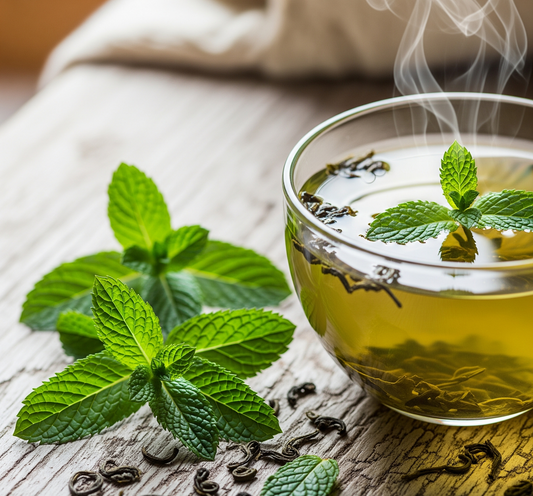Nepali First Flush: A Tea Beyond Its Taste
The Nepali First Flush has a story like none other.
The plucking of the First Flush leaves was guided by astrologers who consulted the Gods to select an auspicious time. The time would coincide with the first rays of the morning sun caressing the leaves in the third day of the waxing moon of the lunar date of Falgun Shukla Trayodashi (Devanagari Script: फागुन शुक्ल त्रयोदशी), or the third day of the waxing moon in the Nepali month of Falgun, or the English month of March. The date was coincidentally one day before Holi; the festival of colors, a delight for the farmers as they celebrate after the first harvest of the season. For the producer of our first flush, Nirananda Acharya, the overlap of Holi with the start of the production process is nothing but an omen. A promise that his tea will be something special.
The priest's mantras marked the start of the harvest. Farmers plucked the leaves with joyful banter, weighed them with traditional balances, and loaded them onto a sturdy truck built for the rugged terrain of Panchthar district. Upon arrival at Kanchanjangha Tea Estate and Research Center, the leaves were spread across the withering troughs.
The next day, the aroma of the withering leaves filled the room; an indescribable scent that one would want to surround themselves with forever. The tea leaves, now transformed, were ready to reach tea lovers worldwide. The joy of the farmers, the dedication of the production staff, and the relief on the producer’s face all culminated in a tea that perfectly captured the essence of the first flush.
Chandra's Charm: Maker of or Nepali First Flush
When the freshly plucked tea leaves for the first flush arrived at the production center, Chandra was the first to get to work. He knew that time was precious and that even a minute's delay would reflect on the quality of the tea.
Chandra had started working at the production center as a tea maker five years prior. His calm demeanor always found its way into the tea. His gentle and caring touch enhanced the leaves, while his subtle humor enlivened the atmosphere and put everyone at ease.
After the first flush was processed, Chandra led the tea tasting session with the entire production team. They gathered around as he carefully assembled the cups and teas in a precise line. With slow and intentional speech, he explained how to experience the full flavor of the first flush black tea.
You can read an in-depth blog on our Nepali First Flush here: Everything you need to know about Nepali First Flush Tea
Chandra's dedication, along with the hard work of dozens of farmers and production staff, made the first flush black tea possible. The tea, born and bred in the Himalayan microclimate, offered a rare fruity and floral taste, distinct from the Indian variants like Darjeeling tea. Chandra, who grew up alongside these tea bushes, was destined to find his path in tea craftsmanship.
Today, the leaves Chandra helped craft reach customers worldwide. As you sip this rare delicacy, remember Chandra and his team, whose passion makes this experience possible.
Amigo's Spring Adventure: First Flush '24
When news of the First Flush of 2024 being ready for plucking reached one of the co-founders, he wasted no time booking a flight to Phidim. With visions of lush tea gardens sweeping over the eastern hills of Nepal, anticipation ran high. However, upon landing in Illam, the sight of dormant, pale yellow bushes, disappointed him.
Even though Illam is supposed to be Nepal’s tea capital, not a single tea leaf was ready for plucking. This was because Illam is a region that usually experiences way more rainfall during the spring. Until and unless the tea plants soak up some rainwater, they can’t blossom. Because of climate change effects, altered rainfall patterns, the world famous spring harvest was delayed in the tea capital; Illam, Nepal.
Yet, hope was restored upon reaching the family farm; Kanchanjangha Tea Estate and Research Center in Phidim. The tea plants, vibrant and alive with tender green leaves, were ready for plucking. The farm buzzed with excitement and renewal as farmers celebrated the earliest and best harvest in over four decades.
In the factory, the energy was electric as workers experimented with different grades and smoky batches of young leaves. During the tea tasting ceremony, the first sip revealed a sweet, fresh flavor with smooth, floral, and light vegetal undertones; a taste that lingered long after.
Standing among the waist-high tea bushes, surrounded by the majestic Himalayan landscape, the team felt a profound connection to nature and the heritage of Nepali tea. This year’s harvest not only marked a new beginning but also served as a beacon of hope for the year to come.
The Living Legacy of the Nepali First Flush
Year after year, our first flush journey captures the essence of Nepal Tea Collective, from the hands of our farmers to the cups of tea lovers worldwide. This living history will continue to grow with new stories from our team and founders, preserving the magic of each unique harvest.
As tea lovers around the world savor each cup, they are not just tasting tea but indulging themselves in the rich history, dedication, and resilience of the farmers and producers who make it all possible. This living chronicle will continue to flourish, with each harvest adding new stories to this timeless legacy.
FAQs About Nepali First Flush Black Tea
Why is Nepal’s First Flush so special?
Nepal’s First Flush is unique due to its high-altitude Himalayan terroir and the traditional “Sahit Juraune” ritual. This involves plucking the leaves at an astrologically auspicious time, which is believed to bless the tea with prosperity and good fortune. The result is an incredibly fragrant and flavorful tea with a rich cultural heritage.
Why is Nepali First Flush Tea more expensive than other teas?
Nepali First Flush Tea is a premium tea due to its limited availability, meticulous hand-processing, and exceptional quality. Harvested only once a year in early spring, this tea is made from the first tender shoots, which are carefully hand-plucked by skilled workers. The delicate leaves require expert handling and precise processing to preserve their signature floral and fresh flavors. Additionally, because it is often produced in small batches using traditional techniques, the demand for high-quality Nepali First Flush Tea exceeds the supply, making it a prized and slightly more expensive tea.
How does Nepali First Flush differ from Summer or Autumn Flush teas?
First Flush teas are known for their light, floral, and highly aromatic profile. They are less oxidized than later flush teas, preserving the delicate essence of the new spring growth. In contrast, Summer Flush (Second Flush) teas have a richer, fruitier flavor with deeper notes due to the warmer temperatures and longer oxidation. Autumn Flush teas, harvested in the fall, develop a bolder, more robust character, often with musky and malty undertones. If you prefer a tea that is bright, fresh, and reminiscent of spring, First Flush is the perfect choice.
About the Author
Nishchal Banskota is the founder of Nepal Tea Collective, dedicated to offering the finest Nepali teas. With years of experience in the tea industry, Nishchal is passionate about sharing the culture and craftsmanship of Nepali tea with the global tea industry. Learn more about Nepal Tea Collective and explore a variety of award-winning teas that bring you closer to the heart of Nepal.






